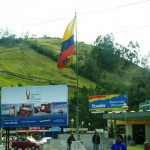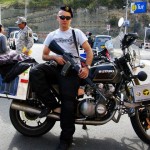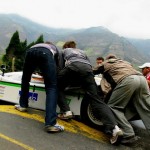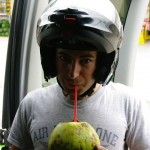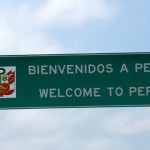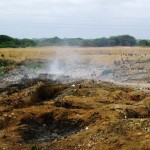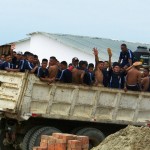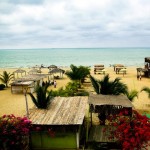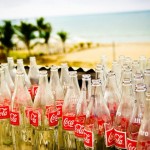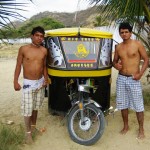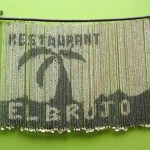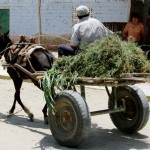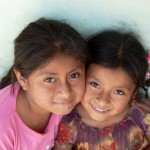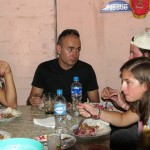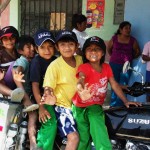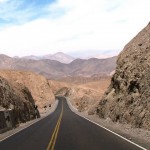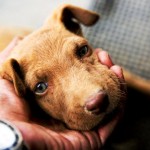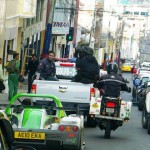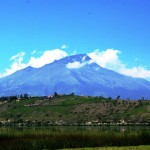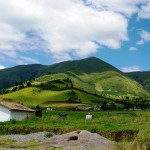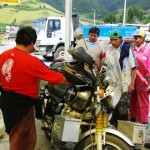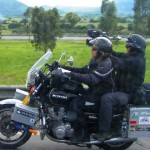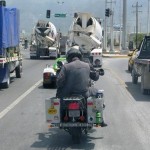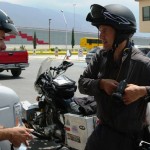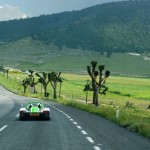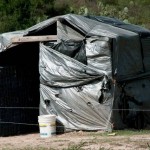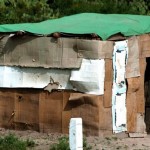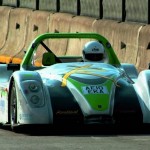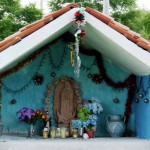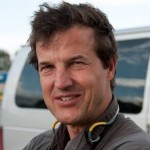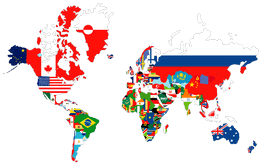December 24th, 2010 - Crossing the Equator
Ecuador is one of the smaller countries in South America, but it was an interesting point in my journey. The equator passes through Ecuador and that means that by reaching the equator, I traveled from the furthest north in Yukon to the center of the earth. Crossing into Ecuador was by far our easiest border crossing in the whole trip as the guy we met in Pasto, Sebastian Moreno, a former Colombian Formula 3 race car driver, accompanied us to make our lives easier.
As we suspected, Ecuador was still in a political chaos from the president kidnapping incident of the week before. This time the president dismantled the police force so it doesn’t happen again. Instead of the regular police, he appointed Special Forces and the military to be in charge of security of the country. These guys were armed to the teeth and were the most formidable looking police force I’ve ever seen outside of the United States. But they turned out to be as menacing as puppies and a lot of fun.
They took it upon themselves to protect and serve us as we drove towards the capital city of Quito, and they never failed to entertain us. Right at the border I made some friends with some of them (distributing American cigarettes never hurts) and in return they took me shoe shopping, opening the way in the busy streets with M-16s. At one point, they pulled over in the countryside and loaded their guns for us to shoot at some plastic bottles while they stopped the traffic for the festivity. As Claudio puts it “It’s always good to make friends with the guys holding big guns.”
Upon reaching Quito, we settled into our hotel with the plan being to leave in 2 days for Peru, but the craziest thing happened (beside another flat in the crappy Pirelli MT66 rear tire.) The RGE team had a press event at the university the next day, but they had partied all night and were still a little tipsy in the morning. The normal presentation involved going really fast and braking hard to demonstrate the amazing braking power of the SRzero electric car, but this time, Nick Sauer, the RGE guy who was driving the car for the demonstration, forgot to brake a little earlier and the SRzero crashed into the wall in front of the TV cameras and the few hundred spectators, just missing Clemens and Claudio. A cheer went up from the crowd, and with that we got stuck in Quito for 5 more days while the guys fixed up the car.
I always thought that Ecuador was a tropical place and since it was on the equator, it was warm. Man, was I wrong. It was mountainous and snow-covered peaks loomed everywhere you looked. It was quite cold, and it rained on and off. I took the time to change the oil on the bike, flushing the brake system with new brake fluid and complete some other due maintenance. Ecuador also turned out to be a really long country as Claudio and I had the longest riding day of the trip trying to get to the border. We left at 6:30 am with only a few hours of sleep and reached the border town at 11 pm, after 17 hours of riding through banana plantations, deserts, mountains and tropical patches.
As we got closer to the Peruvian border, the once nice and clean countryside turned into pile of garbage. There wasn’t a pit stop that we didn’t mention what a shithole it was. If the garbage and the foul smell wasn’t enough, we met our most vicious predators: dogs.
These dogs hunted in packs and somehow they evolved to know that speed bumps are the best place to hunt for innocent motorcyclists. They hung around the giant speed bumps, and as we slowed down to go over the small hill, they attacked us from every side. Claudio and I kept our legs up, and I rolled on the throttle as they lunged at us with bared teeth.
Into Peru
I was really looking forward to seeing Peru, especially western Peru and the magnificent Andes, but as it turned out, our route was going nowhere near the Cordillera. Instead, we hugged the Pacific Coast on the Pan-American Highway and went nonstop through the country. But that didn’t mean that we didn’t like Peru.
In fact, the very first night we got to Peru, Claudio and I stopped for a cup of coffee as the rest of the team were behind at least an hour (the GS850 was unstoppable on the perfect Peruvian highways at sea level and clocking 100 to 110 mph was not uncommon) so we walked in a restaurant to kill some time.
The first thing I saw was a charcoal grill the size of small swimming pool with a giant pig roasting away above the embers. Claudio suggested that we eat there so we walked in to the back where a band was playing. I literally stepped one foot in the room, and I was handed a beer from a semi-drunk guy at the next table. Long story short, we downed 6 bottles of beer (the beer in South America comes in two sizes, the small bottle which is a normal 12oz and the big one is a 40oz like Old English) courtesy of our two new Peruvian friends and settled down for a long conversation which none of us could understand. They spoke only Spanish, and between Claudio and me, we spoke six languages, but none even came close to Spanish.
One thing that they did manage to get across was that we are all brothers no matter where we come from, and they welcomed us to Peru. They were both bikers, and I suppose a loaded motorcycle was enough to bring out the hospitality. We had an amazing welcome to Peru, thanks to our new friends and Crystal, the fine Peruvian social lubricant.
Western Peru is dry. In fact we didn’t see a drop of rain the whole time we were there. Since the climate is so dry, nothing really grows on the coast, and the food staples are chicken and fish. Fish come out of the ocean and the chicken farms are set right on the beaches. In fact, chicken must be the national bird of Peru as it’s served everywhere and is the specialty of the country. One night Claudio, Cynthia and I went out to town for dinner, and we honestly couldn’t find any restaurant that served anything else besides chicken. There are thousands of chicken farms right on the beach as you travel down the coast highway and with every breeze, chicken shit smell filled up the air.
We visited a very poor town and got to hang out with some volunteers and the children that they were working with. After lunch (chicken, of course!) we set out for the town of Huacachina in the Ica region of southwestern Peru, which boasts an actual oasis. The landscape changed from coastal sands to full-fledged desert and it looked much like Sahara. Sand dunes piled up to 1000 feet, and every gust of wind shoved a little more sand into my helmet. The oasis was a fascinating place straight out of Lawrence of Arabia with an emerald green lake surrounded by palm trees sheltered by sand dunes as high as mountains. Cynthia, Claudio and Paul ventured up the biggest dune to take pictures and film while I slept like a baby, glad not to be in the 100 degree heat outside.

